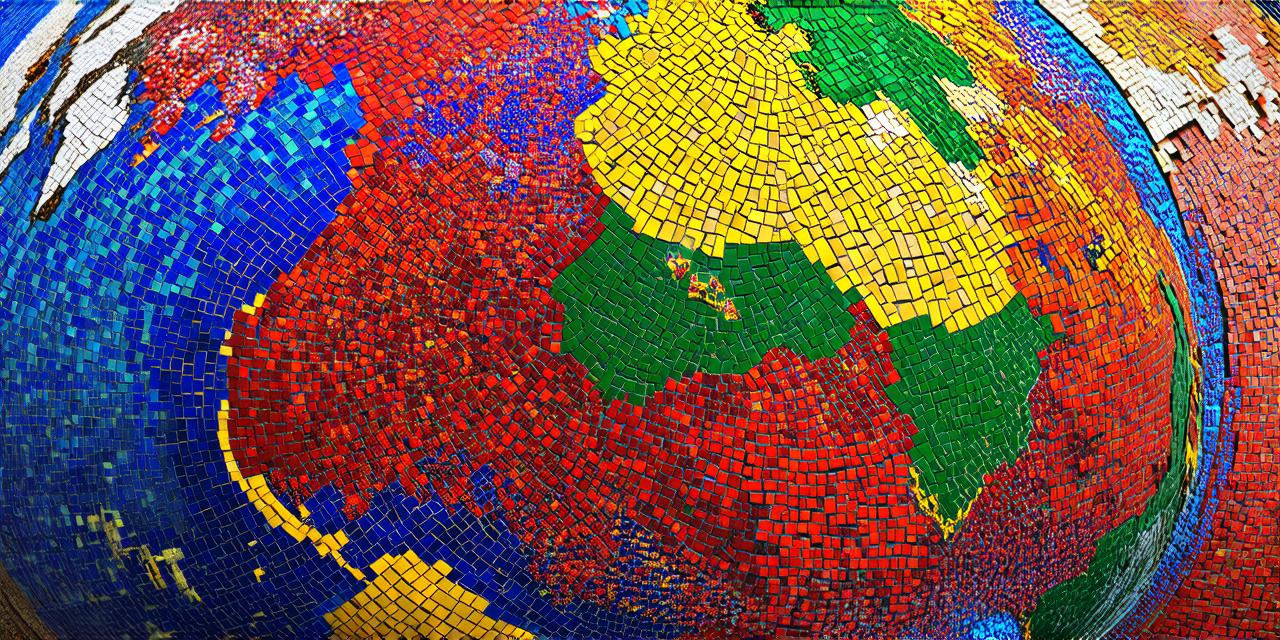Introduction:
Globalization is the process by which countries, economies, cultures, and societies become more interconnected through increasing trade, communication, travel, and cultural exchange. In business, globalization presents both opportunities and challenges.
It offers new markets, increased competition, and access to a global workforce. However, it also requires companies to adapt to different legal, cultural, and economic systems, navigate language barriers, and manage currency fluctuations.
Case Study 1: Apple’s Global Expansion Strategy
Apple is a prime example of a company that has successfully navigated the challenges of globalization. The company started in Silicon Valley in 1976 and quickly became a leader in the technology industry.
In 1981, Apple launched its first product outside the US, the Apple II, in Japan. This marked the beginning of Apple’s global expansion strategy. Over the next decade, the company opened offices and retail stores around the world, expanding its presence in Europe, Asia, and Australia.

One of the key factors behind Apple’s success is its ability to adapt to different markets. The company recognizes that what works in one country may not work in another. For example, in Japan, Apple introduced a smaller, cheaper version of its Macintosh computer called the PowerBook 100, which was more popular among Japanese consumers than the larger, more expensive models.
Apple’s success in globalization is also due to its strong brand recognition and reputation for innovation. The company has managed to maintain its unique identity while adapting to different cultures and languages. It has created localized versions of its products, such as the iPhone and iPad, which are tailored to the needs and preferences of each market.
However, Apple’s global expansion strategy is not without challenges. One major challenge is currency fluctuations. As a US-based company, Apple has to deal with fluctuations in the value of the dollar, which can impact its profitability in international markets. To mitigate this risk, Apple hedges its currency exposures and invests heavily in research and development to stay ahead of the competition.
Another challenge is navigating legal and regulatory differences between countries. For example, Apple has faced legal battles in China over patent infringement claims. The company has had to spend millions of dollars on litigation and licensing fees to resolve these issues. To avoid similar problems, companies need to do their due diligence before entering new markets and work closely with local partners and regulators to navigate the legal landscape.
Case Study 2: Nestle’s Global Supply Chain Strategy
Nestle is another company that has successfully navigated the challenges of globalization through its supply chain strategy. The company is one of the world’s largest food and beverage manufacturers, with operations in over 189 countries.
One of the keys to Nestle’s success is its ability to leverage local resources and expertise. The company has established partnerships with farmers, suppliers, and manufacturers in different countries to source raw materials and components at lower costs. This has allowed the company to maintain its pricing advantage over competitors while still meeting high quality standards.
Nestle’s global supply chain strategy also involves investing in technology and infrastructure to improve efficiency and reduce costs. The company has implemented automation and robotics in its factories, as well as digital tools for tracking and monitoring inventory and logistics. These investments have helped the company streamline its operations and reduce waste, which has had a positive impact on the environment and bottom line.
However, Nestle’s global supply chain strategy is not without challenges. One major challenge is managing currency fluctuations. As a Swiss-based company, Nestle has to deal with fluctuations in the value of the Swiss franc, which can impact its profitability in international markets. To mitigate this risk, the company has implemented hedging strategies and diversified its supply chain by sourcing raw materials from multiple countries.
Another challenge is navigating political and economic instability in different countries. For example, Nestle faced supply chain disruptions in Venezuela due to political unrest and hyperinflation. The company had to reroute shipments and find alternative suppliers to maintain its operations. To avoid similar problems, companies need to monitor political and economic conditions in different markets and have contingency plans in place.
Conclusion:
Globalization presents both opportunities and challenges for businesses. On the one hand, it offers access to new markets, increased competition, and a global workforce. On the other hand, it requires companies to adapt to different legal, cultural, and economic systems, navigate language barriers, and manage currency fluctuations.
To succeed in a global marketplace, companies need to be agile, innovative, and adaptable. They need to invest in technology and infrastructure, build partnerships with local suppliers and manufacturers, and navigate the complex political and economic landscape of different markets. By doing so, they can unlock new opportunities for growth and profitability while mitigating the risks of globalization.
FAQs:
1. How has globalization impacted the technology industry?
Globalization has had a significant impact on the technology industry, as companies have been able to access new markets, increase competition, and tap into a global workforce.
2. What are some of the challenges faced by companies in navigating global supply chains?
Companies face several challenges when navigating global supply chains, including managing currency fluctuations, political and economic instability, and logistical complexities.
3. How has globalization impacted the food and beverage industry?
Globalization has had a significant impact on the food and beverage industry, as companies have been able to source raw materials from around the world and manufacture products in various locations before distributing them to retailers and consumers worldwide.
4. What are some of the lessons learned from Nestle’s global supply chain strategy?
Nestle’s global supply chain strategy has taught several lessons, including the importance of leveraging local resources and expertise, investing in technology and infrastructure, and building partnerships with suppliers and manufacturers in different countries. Companies can also learn from Nestle’s experience in navigating political and economic instability and managing currency fluctuations.
